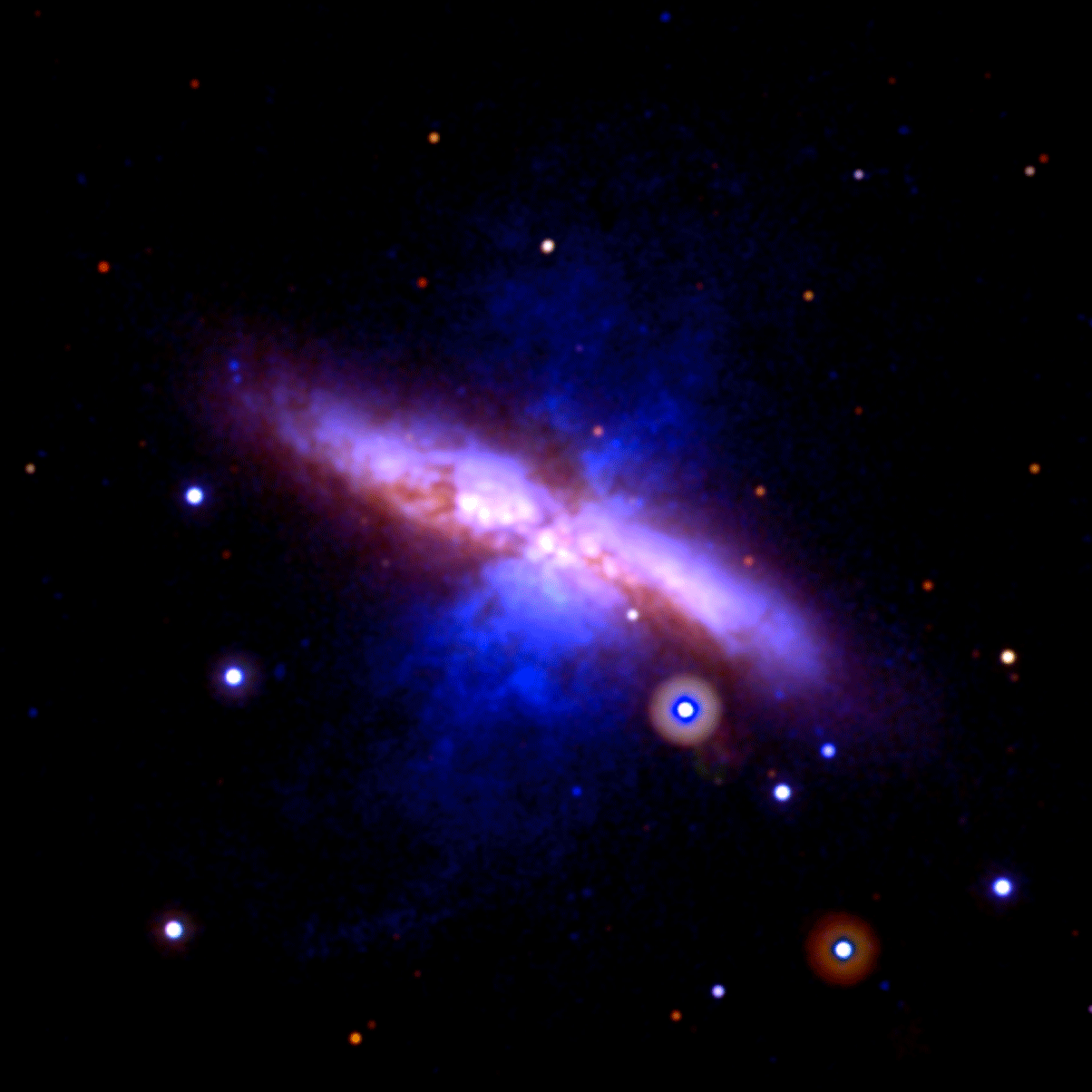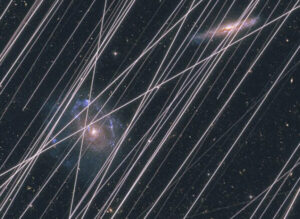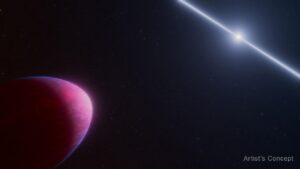The international team of astrophysicists behind the world’s three gravitational wave detectors just submitted a paper analyzing a uniquely strong gravitational wave from 2023. Caused by merging black holes, this gravitational wave is unusual for more than just its strength. The team’s best models suggest that at least one, if not both, of the black holes shouldn’t exist.

LIGO, the detector that caught the strange 2023 event, has two sites in Washington (left) and Louisiana (right). The redundancy allows astronomers to tell if a signal is real or a fluke. Photo: LIGO / Caltech
The black hole “mass gap”
Most large black holes are created when massive stars jettison their outer layers. The iron core, no longer supported against gravity, collapses in on itself and forms a black hole. But this kind of supernova only works for stars up to about 130 times the mass of the Sun.
Above that, astronomers theorize that a new type of supernova takes over. The light the star generates in its core doesn’t manage to exit the star itself. Instead, many of the photons are so energetic that they create extra particles when they hit atoms at the right angle. That means that the pressure of light holding up the star vanishes. With its only defense against gravity gone, the star begins to collapse, triggering a massive thermonuclear explosion that vaporizes it entirely. Nothing remains, not even a black hole.

This time-lapse shows the nearby galaxy M82 in 2007 vs. 2013. The bright dot that appeared near the center of the galaxy in 2013 is a supernova. Pair instability supernovae wouldn’t look like the more common kinds. Photo: NASA/Swift/P. Brown, TAMU
Astronomers have yet to confirm this kind of “pair instability supernova” actually exists, although simulations suggest it does. There are also several candidate pair instability supernovae observations, but further study is needed to confirm them. On balance, though, pair instability supernovae are a well-supported theory of stellar evolution. They imply that stars can’t create black holes above 64 times the mass of the Sun and below about 130 times the mass of the Sun. After that, a new kind of supernova takes over and can produce black holes once more.
But the best models of the 2023 gravitational wave predict two black holes of 103 and 137 times the mass of the sun. The error bars on these measurements are sizable, but still place the lighter black hole firmly in the mass gap, while the heavier one is either in or above it.
These are also the heaviest reliable black hole measurements to come out of the LIGO collaboration.
Spinning black holes create gravitational waves
Gravitational waves occur when massive objects accelerate, rippling spacetime in their path. Black holes spinning together in the final moments before their collision create the most powerful gravitational waves.
Earth-bound systems of lasers, able to detect changes in distance of only 1/10,000th the size of a proton, go after this class. The Laser Interferometer Gravitational-Wave Observatory (LIGO) detected its first gravitational wave in 2015, finally confirming their existence.

Different astrophysical processes create more or less energetic gravitational waves. Astronomers use different techniques to access these different regimes. Black holes colliding fall under the category of compact binaries, with the highest energies. Photo: Mark Hindmarsh
The many possibilities for formation
The research team found one other clue to the history of this strange black hole system. Each of the black holes is spinning much faster than usual. Any explanation for how this system formed has to explain that as well.
It’s possible that there are toggles on stellar evolution, such as exact nuclear reaction rates at high densities, that change the range of the mass gap. But that doesn’t explain the high spin rates. The theory of two stars combining to create each black hole has the same issue.
One explanation that accounts for the spin rates is that one or both of the black holes are the remnants of previous black hole mergers, rather than a collapsing star. Although this requires exotic star cluster conditions, the universe is filled with those. (The research team favors this explanation.)
The colliding objects could also be primordial black holes, a predicted population of black holes formed during the dense stages of the early universe. Primordial black holes don’t have any mass gaps, but they are also far more theoretical than pair instability supernovae.
In 2035, the European Space Agency plans to launch the Laser Interferometer Space Antenna, or LISA. LISA will probe a different regime of gravitational waves from the Earth-based detectors like LIGO. In doing so, it will add a host of strange new black holes to the canon.

LISA consists of three detectors orbiting behind the Earth in a triangular shape. This artist’s conception is not to scale. Photo: NASA






